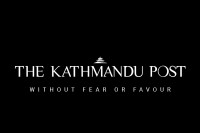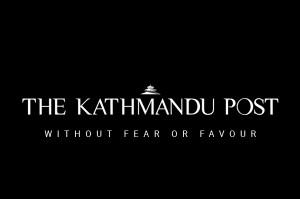Valley
To be or not to be
Before taking to the stage at the first show of Hamlet?, currently on at Sarwanam Theatre, actor Hemant Chalise was a little apprehensive.
Timothy Aryal
Before taking to the stage at the first show of Hamlet?, currently on at Sarwanam Theatre, actor Hemant Chalise was a little apprehensive. He was concerned about his performance, obviously, but more than that, he was curious about how the jokes and punch lines would be received by the audience. “Will every spoof hit its mark; will the pop-culture references be understood? That was one thing,” shares Chalise. “And then, I was of two minds about how to handle my own performance. Since it is a spoof, and nothing serious, I tried to enjoy my own performance and, in turn, hoped that it would translate well with the audience. As the staging started, there were moments when some members of the audience laughed out loud, while others remained awkwardly silent. Indeed, one reference to Darth Vader from the Star Wars franchise was understood only after a week of staging.”

I have to admit that the Darth Vader reference was lost to me, as were other references to pop culture staples such as How to Get Away with a Murder, Game of Thrones, The Bachelorette, among others, since I had never watched any of them.
Referencing pop culture is not new in Nepali theatre and cinema; indeed, such references are embraced heartily by the new wave of directors. Of late, Maan vs Mati’s references to popular Hindi serials incited many a hearty chuckle among its audience, while Saledo had a bit about how internet, and particularly, Facebook, has captured the contemporary imagination. Those were analogies that were sure to be understood by the audience. But in the new Hamlet?, the references were to pop culture staples of the west, and not many, like me, are acquainted with them.
The play Hamlet? was conceived as a pure spoof and was based on the basic premise of the Shakespearean classic Hamlet, with the plotline remaining the same. During the opening moments of Hamlet?, a plump character comes to the spotlight and declares that he’s going to put together a show, an adaptation of the classic tragedy Hamlet. The actors take to the stage and not long afterwards, the preconceived show goes awry, owing to a feud between the characters over who gets what role. “I have been a student of theatre for five years, and you give me the role of an extra?” one character questions. But somehow, they pull it together. Since it is a play performed within a play, the characters in Hamlet? are more like the caricatures of the characters. These
characters are contemporary, well-acquainted with technology (a sequence during the Claudius and Hamlet’s feud where they talk about posting the latest status on the internet makes for an interesting bit), TV series, and movies.
The idea of creating a spoof of a classic tale, director Aashutosh Sharma says, came from his own obsession with pop culture, as are the characters in the Hamlet?. “I was an avid fan of TV series and sitcoms since I was a child. And once I read Hamlet, I was fascinated by the play and, instead of doing a regular staging of the play that has been staged countless times before, I thought why not produce it as a spoof,” Sharma said. “Predictably, the audience was divided. Some of the jokes and references hit home, while other fell flat. For example, we had a booking show by a reputed school in the Capital and the students, well-acquainted with the TV shows, would complete the dialogues even before the actor said it out loud.”

But even though Sharma tags it as a fun project, Hamlet? poses the question as to how foreign plays could be adapted into Nepali context. Even today, virtually one in three plays being staged in the Capital are either translated or re-imagined from classic plays, and take the narrative further on how to go about adapting non-Nepali or classical plays to contemporary relevance.
For veteran actor Rajkumar Pudasaini, Hamlet? strikes as a work of a debutante that is good in its own right, and that the spoof was successful in contemporising the classic Shakespearean tale. Pudasaini offers a brief critique—“Every person has a Hamlet in him. Hamlet is a symbol of our suffering from birth to death.” He also offers insights into how adaptation of classics to suit our own culture is the need of the hour: “The ancient tale that took place in Denmark might not be completely relevant to our society of today. That’s why we have to adapt them to suit the here and now.
Moreover, as the latest adaptation, Hamlet?, is concerned, it’s experimental and a work of budding artists. The same instance might strike as a comedy to a 19-year-old, while as a tragedy to a 30 year old. The target audience of Hamlet? is the youth who are acquainted with the pop culture it references, and it was a successful production in that regard,” Pudasaini said.
Today, with the internet and TV bringing the world closer than ever before, pop culture of the west has come to become a culture of our own. And Hamlet? was a theatrical testament to it. Despite being a play put together by a first-time director, Hamlet? makes its point. And it was a noteworthy production, for it, besides pioneering a new genre of fusion in Nepali theatre, showed how classic plays can be adapted to suit our own time and taste.
The staging of Hamlet? will conclude today, with the 5 pm show.




 26.61°C Kathmandu
26.61°C Kathmandu















